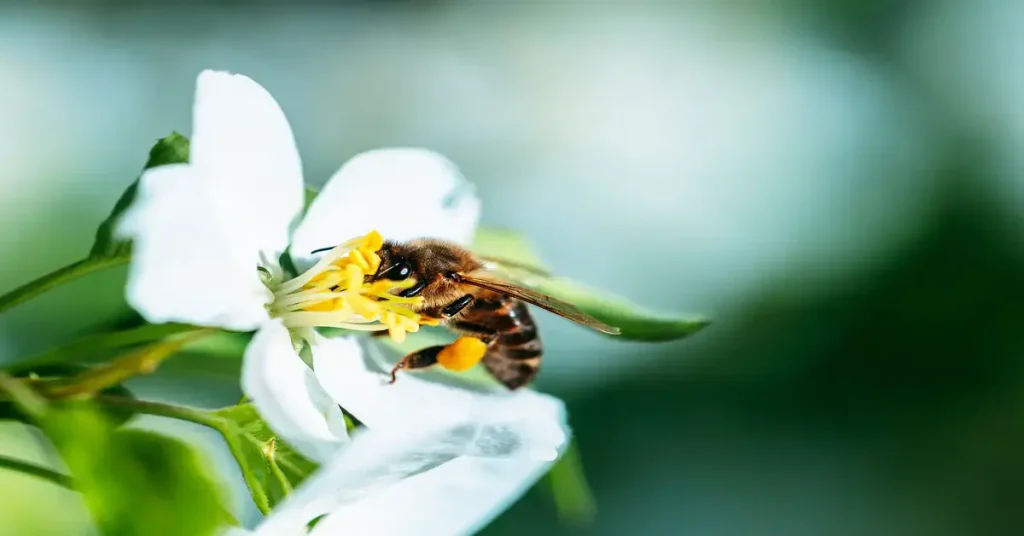Discover the world of open pollination and its vital role in our gardens and ecosystems. This natural process ensures the diversity and resilience of plant species, offering a treasure trove of benefits for the environment and food security. Dive into our guide to learn how open pollination nurtures our planet and how you can contribute to this vital ecological practice.
Understanding Open Pollination
Open pollination is a natural process that allows plants to reproduce and maintain their species diversity. In this method, natural carriers such as wind, insects, birds, and even rain pollinate the plants. For example, bees buzzing from flower to flower gather nectar and play a crucial role in transferring pollen. Similarly, birds, attracted to bright flower colors, inadvertently carry pollen on their feathers. Wind and rain can also move pollen between plants, facilitating the growth of new generations that retain their parents’ genetic traits. This process is essential for the genetic diversity it fosters, enabling plants to adapt to changing environments and resist diseases.
Comparing Seed Types
Understanding each type of seed is crucial for gardeners and farmers who aim for specific outcomes like yield, sustainability, or genetic preservation when navigating the choices between open-pollinated, heirloom, and F1 hybrid seeds.
Open-Pollinated Seeds (OP): These seeds come from plants pollinated through natural methods like wind, insects, or birds, producing offspring identical to the parent plant. This trait makes OP seeds ideal for seed saving and promoting genetic diversity. An example is planting an OP tomato seed, yielding fruit true to the parent’s variety, allowing for consistent seed saving and replanting.
Heirloom Seeds: A subset of open-pollinated seeds, heirlooms have been passed through generations, often for many decades. Their unique flavors, colors, and historical significance give them value. Heirloom varieties like ‘Brandywine’ tomatoes or ‘Moon and Stars’ watermelons bring gardens diversity and a rich legacy.
F1 Hybrid Seeds result from controlled cross-pollination between two different parent plants, aiming to produce offspring that inherit desired traits from both, such as disease resistance or uniform growth. For instance, breeders might create an F1 hybrid tomato for early ripening and disease resistance. However, seeds from F1 hybrids typically do not produce plants that are true to the parent, leading to significant variability in the next generation.
Understanding the distinctions between these seed types enables gardeners to make informed choices, whether preserving genetic heritage with heirlooms or seeking the enhanced characteristics of hybrids.
Benefits of Open Pollination
Open pollination offers several advantages for biodiversity, sustainability, and gardening success. Here’s why open-pollinated varieties are essential:
Genetic Diversity and Plant Resilience: Open-pollinated plants exhibit a wide range of genetic diversity, making them more adaptable to various environmental conditions and better equipped to resist diseases and pests. This genetic variability ensures that plants can thrive in diverse climates and soil types, enhancing the resilience of our food systems.
Sustainability and Environmental Impact: Choosing open-pollinated seeds supports sustainable gardening and farming practices. Since gardeners and farmers can save and replant these seeds year after year, they can reduce their dependence on purchased seeds. This cycle of saving and replanting seeds minimizes waste and promotes a more sustainable relationship with the natural world.
Seed Sovereignty and Community Engagement: Open pollination empowers gardeners with seed sovereignty—the right and ability to save, use, exchange, and sell their seeds. This fosters community engagement, as individuals can share seeds and knowledge, strengthening local food systems and encouraging a deeper connection to the environment.
Practical Guide to Open Pollination
Successfully incorporating open-pollinated plants into your garden requires understanding and action. Here’s how to get started:
Choosing Open-Pollinated Plants for Your Garden:
Begin by selecting open-pollinated varieties well-suited to your local climate and soil conditions. Consider your taste preferences and the specific goals of your garden, whether for food production, biodiversity, or aesthetic value. Look for plants that perform well in your area, offering the best chance for successful pollination and seed production.
Seed Saving and Sharing:
One of the great joys of open-pollinated plants is the ability to preserve seeds for planting in the future. After harvesting, choose healthy, ripe fruits or seeds from your most vigorous plants. Clean and dry them properly before storing them in a cool, dark place. Sharing seeds with your community can help preserve plant diversity and foster connections with fellow gardeners.
Creating a Pollinator-Friendly Garden:
Attracting natural pollinators is essential for successful open pollination—plant various flowering plants to provide nectar and pollen throughout the growing season. Consider adding water sources, nesting habitats, and undisturbed spaces to support a healthy pollinator population. Avoid pesticides and chemicals that could harm these vital garden allies.
Challenges and Considerations
While open pollination offers many benefits, there are challenges and considerations to keep in mind:
Maintaining Genetic Purity:
One of the main challenges with open-pollinated plants is ensuring the genetic purity of the varieties, mainly when different types are grown close together. Cross-pollination between varieties can occur, leading to offspring that may not retain the desired traits. Strategies to prevent this include planting buffer zones, using physical barriers, or timing the flowering of different varieties to avoid overlap.
Navigating Legal and Ethical Aspects:
When saving and sharing seeds, it is essential to be aware of legal and ethical considerations. Some modern plant varieties are protected by patents or plant breeders’ rights, restricting unauthorized propagation. Always respect these rights and opt for seeds from sources encouraging seed saving and sharing.
Conclusion
Open pollination is a cornerstone of sustainable gardening, preserving plant species’ genetic diversity and resilience. By embracing open-pollinated varieties, gardeners foster biodiversity and support environmental sustainability and community engagement. Despite the challenges, the benefits of open pollination—ranging from seed sovereignty to the joy of sharing seeds—underscore its importance in creating a more resilient and interconnected world.

